Can you see the Northern Lights in Iceland in August? It sounds like a contradiction when you’re still recovering from sunburns and used to reading my guides on the midnight sun, golf, and local summer festivals, and other Icelandic craziness.
But August in Iceland is where summer quite sleepily hands the torch to autumn (the sarcastically short season before winter), and with that shift comes the very first whispers of aurora season.
In this guide, I’ll dive into when and whether those whispers turn into a full-on cosmic concert and how you can position yourself for a front-row seat, even when the odds seem slim (which makes it even more enticing, in my view).
Because while the Northern Lights might be shy in August, they do have a habit of showing up when you least expect them. Usually when you’re wrapped in five layers and debating if your hot chocolate needs a shot of something stronger (don’t go for Brennivín!)
Can You Really See the Northern Lights in Iceland in August?
If you’re asking this question, you’re not alone.
August in Iceland is a strange beast.
You can often comfortably wear a t-shirt at midday, a parka by dinner, and sunglasses at midnight.
But catching the Northern Lights in August? That’s the million-krona question (very far from a million dollars, pounds, or euros, sorry!)
The short answer is yes.
The long answer is… with a bit of luck and a considerable amount of patience.
You see, August straddles the very beginning of aurora season.
It’s not peak time, but towards the end of the month is when we just start to have enough darkness back in our lives to see these dancing green bands against a darkening bluey sky after sunset.
You just need the right ingredients: darkness, solar activity, and ideally no or very limited cloud cover (it would help if the volcano switched off also). Basically, the rarest Icelandic combo since someone didn’t say ‘já já’ when they didn’t know what to say mid-conversation.
So while August aurora-hunting might not be a sure thing, it’s definitely worth a punt.
Especially if you’re the sort who enjoys a cosmic challenge and a tick in the old bucket list box.
Why August Is a Tricky Month for Aurora Hunting
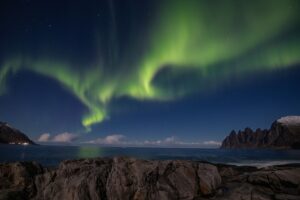
I won’t sugar-coat it.
August is early.
The Northern Lights need darkness, and Iceland spends most of August pretending it’s still summer.
The Midnight Sun doesn’t fully quit until the latter half of the month.
Even then, it clings on with long dusky evenings like your mate who refuses to leave the party and quests on for yet another last drink.
From Reykjavík to the remote Highlands, the sky doesn’t truly go black until the final week of August.
So your chances of spotting auroras before then are slimmer than a vegan pancake at a meat festival (assuming ‘meat festivals’ exist).
That said, if the sky does darken and the aurora forecast plays nice, the end of August becomes your sneaky little window of opportunity.
Just don’t forget your thermal flask, your thermal layers, and your ability to stay awake well past your bedtime.
The Science Behind Northern Lights Visibility
Now, let me hit you with the charged solar particles of my knowledge, just a little.
The Northern Lights aren’t just pretty, they’re proof that the Earth has a magnetic personality (and protective field).
They happen when charged particles from the sun collide with atoms in Earth’s atmosphere.
These collisions produce light in dazzling colours: greens, pinks, purple, and, occasionally, a cheeky red and blue. The colours are based on whether the solar particles interact with either Nitrogen or Oxygen particles, and at which height in the atmosphere.
Point to note (just for me), the last really visible red Northern Lights occurred on my birthday last year, which, when paired with a nice red wine, was a pretty spectacular evening.
But they’re picky.
You’ll only see them when there’s enough solar activity (tracked via the KP index), clear skies, and, most importantly, proper darkness.
Even a full moon or lingering twilight can get in the way and make the sky too bright and drown out the Northern Lights trying to gatecrash the evening.
So while the sun’s having a plasma party in space, you’ll need Iceland’s weather to cooperate a little closer to the ground.
Which, as any local will tell you, is like asking a cat to do yoga on command. Not even my furball will back that option when told.
Where in Iceland Are You Most Likely to See the Lights in August?
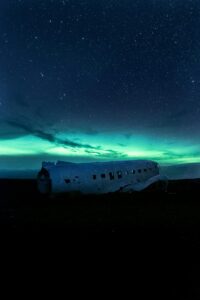
Location makes all the difference when you’re chasing the aurora in a month that still clings to long days and bright skies.
You’re looking for places with low light pollution, wide-open views, and weather that’s just unpredictable enough to surprise you with a clear sky or two.
Iceland’s terrain is dramatic and varied, so even within a single region you can go from coastal gloom to inland clarity in less than an hour.
In August, that subtle mix of remoteness and accessibility becomes the name of the game.
And if your plans involve staying south or exploring the lesser-visited corners of the island, you’ve still got a fighting chance of witnessing the first glimmers of auroral mischief.
Especially if you know where to look and when to wait.
Regions with the Best Chance of Dark Skies
If you’re hunting for darkness in August, you’ll need to head where light pollution isn’t doing its best city impersonation and shrouding your vision with yellow and amber glows.
The Westfjords, the Highlands (if you’re adventurous), and the eastern stretches of Iceland are your best bets.
These regions have fewer towns, fewer street lamps, and a lot more stars.
You might have to drive a bit, but the payoff can be spectacular.
Even a brief aurora flicker in these quiet spots feels like a private show from the universe.
Why South Iceland (Including Flúðir) Offers Unique Potential
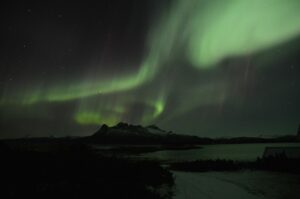
Now, here’s the twist.
South Iceland may not be the darkest place in August, but it has something even more valuable: accessibility.
In particular, Flúðir sits in a pocket of relative calm.
Far enough from major city glow, yet close to geothermal hotspots, quiet meadows, geysers, waterfalls, and wide skies.
This is where the Hill Hotel comes in as a savvy basecamp. Especially when you consider the team will also give you a free of charge Aurora wakeup call if you ask at reception on check-in.
Imagine soaking in a hot tub with a glass of something local, eyes peeled on the sky, and boom, nature’s greatest show finally drops the first curtain of the season.
And, even if the lights aren’t playing ball and don’t show, you’re still winning.
Avoiding Light Pollution: Tips for Better Aurora Viewing
This one’s simple in theory.
Get away from anything with a plug.
Streetlights, car headlights, that LED collar on a dog (ok, maybe this one is overkill), they all mess with your night vision.
Choose accommodation that understands the importance of darkness.
Pack a headlamp with a red-light mode if you’re planning on taking some shots on your DSLR.
Give your eyes 20 minutes to adjust to the night.
And resist the urge to check your phone every two minutes.
Trust us, the auroras aren’t texting back, and they don’t have X, Facebook, Instagram, Telegram, TikTok, or any other platform that comes out after this guide is published.
When to Look: Best Time of Day for Spotting the Northern Lights

Timing is everything when it comes to aurora chasing.
Even in August, when daylight still lingers longer than most aurora chasers would prefer, there’s a small nightly window that offers potential magic.
Your best chance comes late, usually after midnight, when the sky has finally shrugged off its summer glow.
You won’t get actual darkness in August, but for those couple of astronomical twilight-drenched hours, the conditions can line up in your favour.
The later it gets, the darker it gets, and while that might not thrill your circadian rhythm, it does wonders for the Northern Lights.
Just make sure you wrap up warm, and embrace the weird joy of wandering into a field at 1 AM just to stare at the sky. You often get the more interesting fatigue-filled chat with your friends or family at this time of day, also.
Because in Iceland, that’s what counts as a reasonable evening activity.
How Darkness and Clear Skies Play a Role
You’ll need a clear window between sunset and sunrise where the sky is dark enough to reveal the show.
In late August, this window might only be from midnight to 2 AM.
That’s your golden hour.
Or rather, your green, pink, and possibly purple hour (side note: if you see pink, this is when the Aurora is about to move like a breakdancer as opposed to the sway of the green).
You’ll also need cloud-free skies.
No small ask in a country where the weather changes faster than a toddler’s mood.
Ideal Conditions to Maximise Your Chances
- KP Index of 3 or higher: The higher the index, the stronger the solar activity. A KP of 3 or above means you’ve got a fighting chance, especially if you’re far from city lights (but in Iceland, anything above 2, with clear skies and patience, you should see something…but not always).
- A Clear sky forecast (check Vedur.is): Even if the aurora is out in full force, clouds will happily ruin your night. Use Iceland’s trusty weather service to scout out clear patches.
- Minimal moonlight: A full moon can wash out the aurora’s glow. Aim for nights around the new moon when the sky is at its darkest.
- A spot away from town: Get at least a few kilometers from streetlights and buildings. National parks, farms, and rural lodges are great bets.
- Patience, warm socks, and probably snacks: You could be out for hours. Dress in layers, bring something hot to drink, and pack a snack. Aurora chasing isn’t for the faint-hearted, or the hangry. That might lead to an Aurora divorce (drop me an email if you need some Aurora Therapy).
How to Prepare for an Aurora Hunt in August
Chasing the Northern Lights in August is not just about crossing fingers and wishing on a shooting star. It’s about setting yourself up for success, even when the odds are playing hard to get.
This means knowing when to head out, what to bring, and how to interpret those mysterious KP numbers like you’re decoding alien messages.
It’s also about knowing how to stay sane while standing in a field at 2 AM, wondering if that faint glow is aurora or just your eyes betraying you.
With the right tools, layers, and mindset, your August aurora mission in Iceland can go from hopeful to hell yeah in a heartbeat.
Weather Apps, Solar Forecasts, and Patience
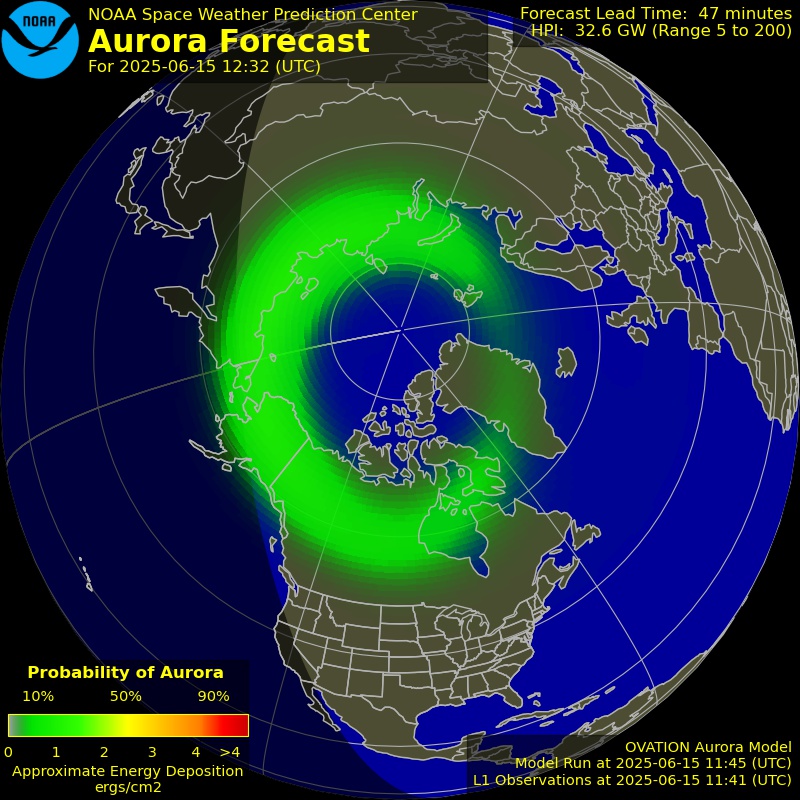
Download the Aurora app, it’s your trusty digital lookout tower. And, it provides real-time alerts, which I’ve found to be pretty accurate when out and about (as long as you have your location settings turned on).
It delivers live forecasts, KP indexes (which measure geomagnetic activity), and real-time alerts when auroral conditions peak.
Don’t rely on just one source, though. Pair the app with Iceland’s national weather service (vedur.is), which gives detailed cloud cover maps and short-term forecasts specific to your area.
Take things a step further by checking solar wind data or space weather dashboards; tools like NOAA’s Space Weather Prediction Center offer another layer of insight. In fact, NOAA is pulling its data straight from satellite sources, whereas everything else is pulling data from them.
And of course, nothing beats local knowledge: ask your host, the local bartender, or even your tour guide on the day. Locals have an uncanny sixth sense for when the sky’s about to put on a show. I myself can often drive home under a darkening sky and have a strong accuracy as to whether there will be a great show that night (or maybe I’m deluded and lucky!)
Finally, sprinkle in your own gut feeling and a good chunk of patience. Aurora chasing is part science, part magic, and part sheer stubbornness.
What to Wear (Because Icelandic Weather Is Still Icelandic)
Layers.
Then more layers. And maybe some layers for your layers.
Start with a thermal base layer to trap body heat without bulk. Add a fleece or insulated mid-layer to retain warmth, then top it off with something waterproof and windproof, because Icelandic weather loves a good plot twist.
August may still be “summer,” but don’t let the calendar fool you. Nighttime temperatures can easily drop below 5°C, especially when you’re standing still and sky-gazing.
Bring gloves. Not just any gloves, wind-resistant ones that still let you tap a camera shutter or operate a phone screen are ideal.
Bring a hat. You lose most of your heat through your head, and there’s nothing romantic about a frozen scalp.
And please, please, please wear proper hiking boots. They should be waterproof, insulated, and have with good grip, you might be traipsing through damp fields or dewy hillsides to find that perfect aurora-viewing perch.
Insider tip: stash a hand warmer or two in your pockets. Your fingers will thank you around hour two of waiting, and they may keep you from snapping in hanger. As Oasis said, don’t look back in hanger.
Camera Settings for Northern Lights Photography
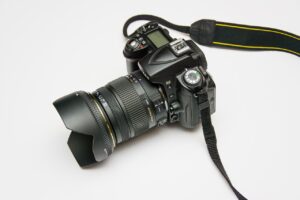
Manual mode is your best friend if you want a properly epic shot, and in Icelandic conditions, it’s practically essential. You won’t want to miss the opportunity to have your own pristine pic.
Start by setting your ISO between 800–1600. If your camera can handle higher ISOs without too much noise, feel free to experiment on the upper end (you’ll likely need a full-frame camera for that).
Your aperture should be as wide as possible (f/2.8 or lower) to let in as much light as you can. The Northern Lights aren’t floodlights; they’re delicate, often subtle glows that need all the help your lens can offer.
Shutter speed will depend on how strong the auroras are, but aim for a 5–15 second exposures. Brighter auroras need less time, while fainter ones might require longer exposures. But beware of star trails if you go beyond 20 seconds (if you’re shooting at this length of time, the chances are the Aurora is not that exciting).
Use a tripod always. Icelandic winds are not your friend, and even the slightest hand movement will turn your aurora into a green blur.
Turn off your flash entirely. Not only will it ruin your long exposure, but you’ll also earn the eternal disapproval of every elf, photographer, and fellow sky-watcher within a 2-kilometre radius.
Insider tips: use a remote shutter or timer to avoid camera shake (most full-frame DSLRs like my Nikon D850 have them built in), manually focus on a bright star or distant light (or set the focus to infinity), and bring spare batteries if you have them, as the cold drains them fast.
Alternative Nighttime Wonders If You Don’t See the Aurora
Not every night sky in Iceland delivers a laser-light spectacular. But don’t hang up your adventure boots just because the auroras ghosted you. August in Iceland still serves up a buffet of starlit surprises.
This is the perfect time to explore the country’s after-dark delights, from celestial shows without the green streaks to warm geothermal soaks under a twilight glow. The absence of auroras might even offer a blessing in disguise: you’ll have more time to slow down, soak in the silence, and embrace Iceland’s lesser-known nighttime magic whilst everyone else is resting up for the night.
So if the sky stays quiet, take it as a cue to try something you didn’t plan, because some of the best Icelandic moments happen when you’re not chasing, but simply enjoying.
Stargazing Under Iceland’s August Skies
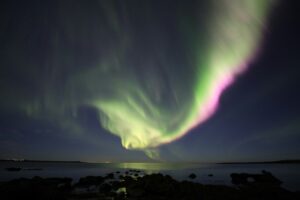
Even if the lights don’t appear, the stars in late August are something else.
No light pollution means you’ll see constellations you didn’t know existed. And, though the lack of perfect darkness will impede your view, if you’re out in regions such as Snæfellsnes, you should see some pretty awesome future screensavers.
Look out for satellites, shooting stars, and maybe even the Milky Way stretching across the sky (unlikeæy in August, but entirely possible towards the end of the Month or start of September).
Bring a blanket and make it your own Icelandic planetarium.
Geothermal Baths and Midnight Magic in the South
This is where Iceland really flexes.
If the aurora skips town, just head to a geothermal pool instead.
Whether it’s the Secret Lagoon in Flúðir (you get a 15% off as a guest of the Hill Hotel) or a lesser-known hot spring, there’s something about bathing under the stars that makes you forget your disappointment.
Also, your body will thank you for choosing 38-degree water over a cold field.
The Hill Hotel: Your Peaceful Base for Sky Watching
Location matters when it comes to Northern Lights, and the Hill Hotel in Flúðir offers the kind of natural setting that tilts the odds in your favour.
Nestled in one of South Iceland’s low-light pockets, our boutique hotel gives aurora hunters a base with comfort, calm, and clarity, both in terms of skies and service.
With geothermal hot tubs under open skies and minimal light interference, you won’t need to venture far (or even get out of your robe) to catch the lights when they decide to dance.
And when the clouds roll in, there’s always our locally sourced dinner menu and that second helping of dessert you definitely earned.
Why Our Flúðir Location Is Perfect for August Aurora Watching

At the Hill Hotel, we’re not just another stop on the Ring Road.
We’re your tranquil escape in South Iceland.
Perched in Flúðir, away from Reykjavík’s glow, our boutique hotel gives you front-row seats to Iceland’s wild skies.
Our rooms face open horizons.
Our hot tubs are ready.
And our guests? Well, they’re usually the smug ones who spotted the lights when everyone else gave up.
Drop us a line for more tips on sky-watching from our grounds.
Or browse our rooms if you’re keen to book a stay timed with late August’s first auroral dances (we’ll put your Aurora wake-up calls on speed dial).
Final Thoughts
The Northern Lights in August are a bit like a surprise guest at a dinner party.
They don’t always show up.
But when they do, it’s unforgettable (and they don’t linger more than you’d like).
So if you’re visiting Iceland this August, keep your eyes skyward.
Plan smart.
Stay somewhere with dark skies and warm comfort waiting nearby.
And remember, whether you see auroras, stars, or just clouds shaped like dragons, it’s all part of the Icelandic magic.
Ready to plan your trip? We’ll keep the hot tub warm and the hot chocolate flowing.

